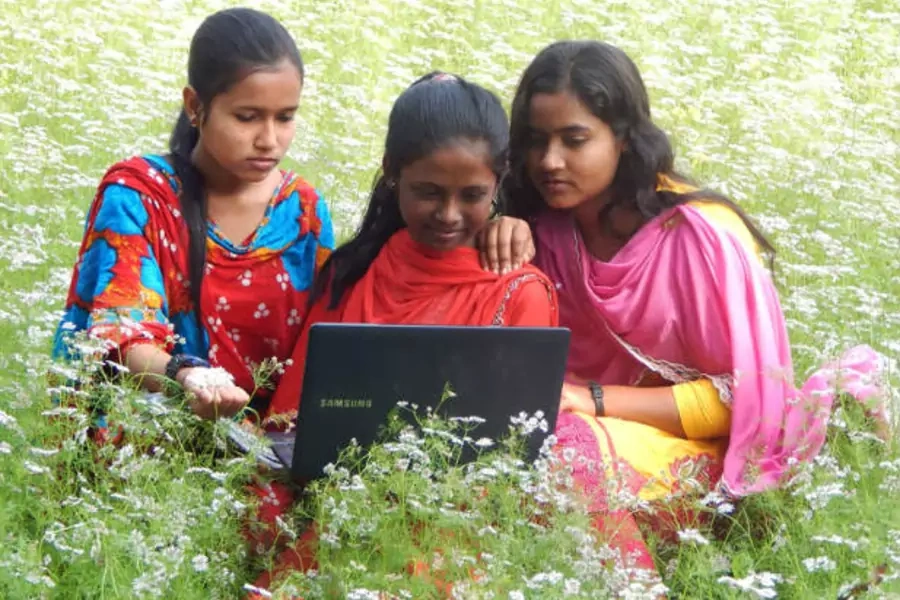New Results From Bangladesh on How to Delay Child Marriage

More on:
Voices from the Field features contributions from scholars and practitioners highlighting new research, thinking, and approaches to development challenges. This article is authored by Sajeda Amin, who leads the Population Council’s work on livelihoods for adolescent girls.
While growing up in Bangladesh, my grandmother was married at the age of fourteen. My mother was wed at sixteen years old. Today, two out of three girls in the country are married as children—Asia’s top rate and the world’s fourth highest. Many become mothers while they themselves are still children.
And yet, I have never been more optimistic about the future for Bangladeshi girls and their communities. When I was a teenager in Dhaka in the 1970s, women had an average of seven children each, extreme poverty was endemic, and women had far fewer rights and opportunities than men. Women were lucky to live past fifty years old. But deep investments in education and family planning — coupled with the arrival of the garment industry — lifted tens of millions out of grinding poverty. Babies born in Bangladesh today are about six times more like to survive past five years old than those born in the 1970s. Women have about two children each and girls go to school at the same rate as boys.
Bangladesh has proven an uplifting success story in its development — some experts would even call it a miracle.
So why in a country poised for continued progress do we still see some of the world’s highest rates of child marriage? We have attempted to address the problem ineffectively: using intuition and guesswork when we should be applying evidence to empower girls and engage communities.
Listening to the facts
It is this paradoxical development situation that has fueled my fascination for studying Bangladesh as a demographer and social scientist. I’ve spent twenty-five years analyzing the country’s intersections between poverty, gender and youth. And now we have encouraging results from the most rigorous study to date in Bangladesh on what works to delay child marriage.
Despite the growing global body of research suggesting that child marriage is best addressed through community engagement and girls’ empowerment, many in Bangladesh and elsewhere have focused on legal enforcements and “marriage busting” — breaking up underage unions as they happen — as the lead strategy to curb child marriage. Girls are often valued only for their role as future wives and mothers, rather than as future citizens and producers.
While it is important to have robust laws and enforcement in any society, this misses the underlying causes of child marriage: widespread poverty, entrenched gender inequality, parental perceptions of girls’ insecurity and lack of opportunities for girls.
Motivated by these issues, the Population Council completed a randomized controlled trial study to evaluate what works best to delay child marriage, involving more than 9,000 girls across three child marriage hotspot regions in rural Bangladesh.
For eighteen months, girls met weekly with local mentors and peers in safe, girl-only locations, called BALIKA centers, and received life skills training. They also received one of three additional interventions: educational support, gender rights awareness training, or livelihoods skills training. All girls had access to new technologies and communities were closely consulted throughout the program. A control group received no services, crucial to comparing the effects of our interventions and determining if they worked.
Understanding what works
We learned the importance of empowering girls and giving them skills and knowledge for future livelihoods. Girls living in BALIKA communities were one-third less likely to get married than those not living in communities reached by the project. And the benefits did not stop at delayed marriage — girls in BALIKA communities were also more likely to stay in school, support gender equality and have improved health and well-being.
This represents a milestone in our knowledge of what works to delay child marriage in Bangladesh. By providing girls with skills for future livelihoods, reaching them while they are under sixteen, creating girl-centered platforms, and engaging local mentors and support, we can make a real difference in the trajectory of girls’ lives.
This week, global health and human rights leaders convene in Copenhagen for Women Deliver 2016, the world’s largest conference on the health, rights, and well-being of girls and women in the last decade. They will discuss how to fulfill the ambitious targets set out in the Sustainable Development Goals and how to translate rhetoric to reality for girls and women.
So my challenge to those at Women Deliver 2016 and beyond: Governments and their development partners should prioritize girl-centered programs and safe spaces — and drastically increase their funding. Reducing child marriage should be seen as more than fulfilling human rights; it is a crucial investment in our social, health and economic future. We must systematically evaluate programs and policies that aim to improve girls’ lives and then scale up those that are proven to work.
My country has worked wonders to improve mortality, education and public health. Let’s use this new evidence to ensure that the next generation of Bangladeshi girls don’t become mothers while they are still children themselves.
And as we head into this landmark conference, let us not lose sight of the person at the heart of our efforts: each and every girl who strives to successfully navigate the transition to adulthood and become her own person.
Personally I think of a girl in BALIKA who told us that she wants to “stand on my own two feet, and then get married.” When girls are given the skills, support, and respect to not be married until they become adults, Bangladesh can truly fulfill its development “miracle.”
Content originally posted by Devex. Interested in more stories about women’s and girl’s health? Make sure to follow coverage of the fourth Women Deliver conference in Copenhagen, Denmark. Join the conversation by using #WD2016.
More on:
 Online Store
Online Store